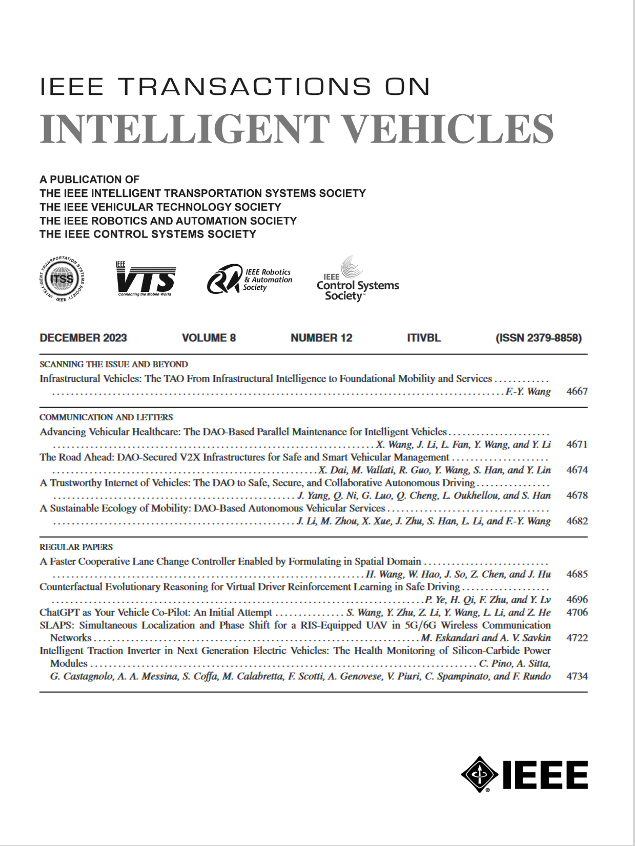LightCast:通过集成压缩框架有效的交通流量预测
IF 14.3
1区 工程技术
Q1 COMPUTER SCIENCE, ARTIFICIAL INTELLIGENCE
引用次数: 0
摘要
交通预测在智能交通系统中起着至关重要的作用。为了提高预测精度,现有的深度学习模型通常具有复杂的结构,部署时需要大量的计算量。为了实现交通系统的无缝运行和车辆与道路基础设施之间的快速通信,最好的解决方案是将模型部署在本地运行的边缘设备上,而这些设备的硬件资源有限。在这个领域,我们用我们新提出的轻量级预测(LightCast)模型同时考虑了效率和有效性。具体而言,我们首先设计了时空全局局部前模型(stgl前模型),该模型综合考虑了交通数据中的全局和局部时空信息,引入了各种自关注机制,以提供最先进的预测精度。此外,LightCast采用混合粒度剪枝策略去除STGLFormer中不同粒度的冗余成分,并采用自动层匹配蒸馏方案有效恢复剪枝后的预测精度。自动层匹配蒸馏方案解决了传统特征蒸馏方法中的层不匹配问题。在四个真实的公共交通数据集上进行的大量实验表明,我们的方法可以在更高的计算效率下实现接近SOTA的性能。本文章由计算机程序翻译,如有差异,请以英文原文为准。
LightCast: Efficient Traffic Flow Forecasting via an Integrated Compression Framework
Traffic forecasting plays a pivotal role in intelligent transportation systems. To enhance forecasting accuracy, existing deep learning models often feature complex structures with large computational demands for deployment. To achieve seamless traffic system operations and prompt communication between vehicles and roadway infrastructure, the best solution is to deploy models on locally operating edge devices, which are limited in hardware resources. In this realm, we consider both efficiency and effectiveness in this paper with our newly proposed Lightweight Forecasting (LightCast) model. Specifically, we first design Spatio-temporal Global-local Former (STGLFormer) that introduces various self-attention mechanisms comprehensively considering both global and local spatio-temporal information in traffic data to offer state-of-the-art (SOTA) forecasting accuracy. Furthermore, LightCast involves a mix-granularity pruning strategy to remove redundant components in STGLFormer at different granularities and an automated layer-matching distillation scheme to effectively restore the forecasting accuracy after pruning. The automated layer-matching distillation scheme resolves the issues of layer mismatching in the traditional feature distillation approach. Extensive experiments conducted on four real-world public transportation datasets demonstrate that our approach can achieve near SOTA performance at a much higher computation efficiency.
求助全文
通过发布文献求助,成功后即可免费获取论文全文。
去求助
来源期刊

IEEE Transactions on Intelligent Vehicles
Mathematics-Control and Optimization
CiteScore
12.10
自引率
13.40%
发文量
177
期刊介绍:
The IEEE Transactions on Intelligent Vehicles (T-IV) is a premier platform for publishing peer-reviewed articles that present innovative research concepts, application results, significant theoretical findings, and application case studies in the field of intelligent vehicles. With a particular emphasis on automated vehicles within roadway environments, T-IV aims to raise awareness of pressing research and application challenges.
Our focus is on providing critical information to the intelligent vehicle community, serving as a dissemination vehicle for IEEE ITS Society members and others interested in learning about the state-of-the-art developments and progress in research and applications related to intelligent vehicles. Join us in advancing knowledge and innovation in this dynamic field.
 求助内容:
求助内容: 应助结果提醒方式:
应助结果提醒方式:


